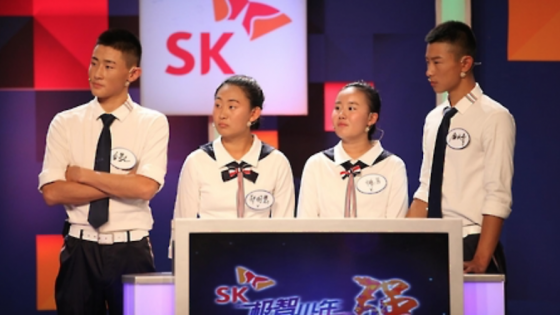The gender pay gap in South Korea is the highest in the OECD (OECD 2017); it is more than twice as wide as the gender pay gap in the US and the average gender pay gap across the OECD. Moreover, South Korean women remain under-represented in public life, in spite of the fact that they have above-average scores in PISA and in PIAAC, and younger women have higher levels of educational attainment than their male peers (OECD 2017).1
Background to our study
A growing experimental literature investigates whether or not gender gaps in economic outcomes such as those described above might be due to inherent differences in male and female attitudes to competition. A number of experimental studies do indeed find that the competitive choices made by men and women differ (e.g. Gneezy et al. 2003). We do not consider this experimental literature here, but instead follow a different but complementary approach, which analyses unique performance data from real-world activities that are competitive by their very nature and explores how these vary by gender.
Multi-stage competitions are a feature of many areas of economics, and they have increasingly been engaging the interest of applied analysts working on gender issues. For example, two-stage competitions have been studied by, inter alia, Cai et al. (2019) and Irriberi and Rey-Biel (2018). Irriberi and Rey-Biel use data from a two-stage math competition in Madrid in Spain, while Cai et al. use data from the college entrance exam (Gaokao) in China, the first stage of which is a mock examination. Both studies find that the gender gap in performance increases from stage 1 to stage 2, and attribute the increase in female underperformance to higher competitive pressure (Cai et al. also attribute it to women’s weaker incentives to perform in such a high-stakes situation). Booth and Yamamura (2018) have also studied multi-stage competitions, in their case in an environment in which individuals were randomly assigned to single-sex or mixed-sex races, where success determined subsequent stakes and ability ratings.
Two studies that we draw on (Jetter and Walker (2016, 2017) use data from the US television quiz show Jeopardy!. They found for a variety of different age groups that there are no gender differences in responding to questions and in accuracy in high-stakes situations. But are these results generalisable to other OECD countries? In our recent study, Booth and Lee (2019), we find very different results for our Korean quiz show.
Our new study using Korean data
Our goal was to explore the role of psychological pressure on performance in competitions. We aimed to investigate if there are gender gaps in competitive performance amongst Korean children of high-school age, and to chart how these vary across different situations in order to see how variations in psychological stress could affect outcomes. We use data from the long-running Korean television game show Janghak Quiz. This is a weekly competition program in which high-school students (with an average age of 17) compete for scholarship (Janghak means “scholarship” in Korean).
Each group of participants in an episode of Janghak comprises five individuals who compete against one another. The prize (scholarship) is not substantial, amounting to about $1,000 or $2,000 for weekly winners, but successful contestants are advanced to monthly or annual competitions or can continue over weeks, in which cases the prize can increase up to $30,000 or $40,000. It is the oldest television game show in Korea, having been broadcasted since 1973. Each episode hosts five contestants from five different high schools. Contestants self-select into the game; any high-school students who are interested in participating may apply and take a brief preliminary qualifying test. Depending on their results in this test, they are then selected to participate. We expect our participants to be more competitive than the bulk of the high school population, since they have volunteered to play and are then selected by the game show organisers after passing a preliminary test based on ability.
These individual-level data from the Janghak quiz show give basic information about contestants, such as sex, high school, and grade, as well as their round-by-round score and rank. These data were collected by a research assistant who watched all the shows recorded from February 2008 to December 2011 (episodes 577 to 777). We excluded some ‘special’ episodes from the sample (for example, we excluded one special show where students and their teachers were paired and competed as a team). In the end, for our empirical analysis, we focus on 180 shows with 900 contestants (= 180*5).
What did we find?
The game rules changed a few times during the sample period, and we are able to exploit this variation to explore whether psychological pressure affects girls and boys differently, as explained in detail in Booth and Lee (2019). We found the following results.
- First, there is typically a gender gap in performance across all episodes of the quiz show.
- To investigate underlying mechanisms that might explain these gender gaps, we explored how male and female performance varied under different rules of the game. We found that there are no gender gaps when stress is kept to a minimum – that is, in games without knock-outs, penalties, or ‘exhibitionist’ ways of pressing the response buzzer. However, in games where these features, there significant gender gaps in performance appear.
- Third, we explored performance in Round 2 of the shows, where we found larger gender gaps. These are consistent with girls being increasingly hindered by psychological stress and risk aversion as the competition proceeds.
- Finally, we used panel data (where the same individual is observed over 25 rounds) to estimate performance in the games in which players stay in for 25 questions. Here, we found that girls are less likely to respond faster even when their probability of winning is higher. These panel data estimates are consistent with over-confidence in boys and under-confidence in girls, as well as with different behavioural responses to psychological pressure.
It is interesting that we have found these gender gaps in performance in Korea, when they have not been found in US game shows (Jetter and Walker, 2016, 2017). This may be because of different cultural values between the two countries, as highlighted in OECD (2017), or because of other unobserved differences between the shows.
References
Booth, A and E Yamamura (2018), “Performance in Mixed-sex and Single-sex Competitions: What We Can Learn from Speedboat Races in Japan”, Review of Economics and Statistics 100(4): 581-593.
Booth, A and J Lee (2019) “Girls' and Boys' Performance in Competitions: What We Can Learn from a Korean Quiz Show”, CEPR Discussion Paper No. 13552.
Cai, X, Y Lu, J Pan and S Zhong (2019), “Gender Gap under Pressure: Evidence from China’s National College Entrance Examination’”, Review of Economics and Statistics (forthcoming).
Gneezy, U, M Niederle, and A Rustichini (2003), “Performance in Competitive Environments: Gender Differences”, The Quarterly Journal of Economics 118(3): 1049–74.
Iriberri, N and P Rey-Biel (2018), “Competitive Pressure Widens the Gender Gap in Performance: Evidence from a Two-Stage Competition in Mathematics”, The Economic Journal (forthcoming).
Jetter, M and J K Walker (2016), “Gender in Jeopardy!: The Role of Opponent Gender in High-Stakes Competition”, IZA Discussion Paper No. 9669.
Jetter, M and J K Walker (2017), “Gender Differences in Competitiveness and Risk-Taking among Children, Teenagers, and College Students: Evidence from Jeopardy!”, IZA DP No. 11201.
OECD (2017), The Pursuit of Gender Equality, OECD Publishing.
Endnotes
[1] See also https://www.oecd.org/korea/Gender2017-KOR-en.pdf



